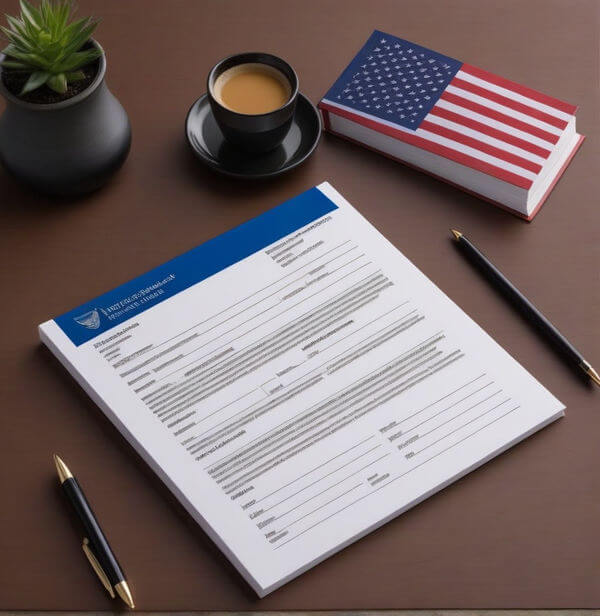
Overview of the EB-3 Visa
The EB-3 visa is a category within the employment-based immigration system in the United States, designed for foreign workers seeking to live and work permanently in the U.S. This visa not only facilitates the entry of skilled workers, professionals, and other workers into the U.S. labor market but also grants them and their families the opportunity to become permanent residents. By securing an EB-3 visa, individuals can look forward to contributing to the U.S. economy while building a stable future in America.
EB-3 Visa Costs: Understanding the Current Fees
The filing fees associated with the EB-3 visa are outlined below. It's important to note that the U.S. Citizenship and Immigration Services (USCIS) has announced plans to increase charges for most visa categories, including the EB-3, starting in late 2023. This adjustment in fees is part of an overall strategy to manage the rising costs of processing immigration applications. Potential applicants should prepare for these changes by budgeting accordingly and staying informed about the final fee structures once they are officially published.
Overview of EB-3 Visa Expenses for Applicants Inside the United States
For individuals applying for an EB-3 visa from within the United States, the associated costs are structured as follows:
- Form I-140 (Immigrant Petition for Alien Worker):
- Filing Fee: $715 (This fee is typically covered by the employer).
- Immigrant Fee: $235.
- Form I-485 (Adjustment of Status Application):
- Filing Fee: $1,440.
- Biometrics:
- Fee: $85 (This is mandatory for applicants between the ages of 14 and 79).
These fees are essential components of the application process for the EB-3 visa, facilitating the transition from temporary to permanent residency status in the U.S.
EB-3 Visa Expenses for Applicants Filing from Outside the United States
If you are applying for an EB-3 visa from outside the U.S., here are the key costs involved in the process:
- Form I-140 (Immigrant Petition for Alien Worker):
- Filing Fee: $715 (This fee is typically paid by the employer sponsoring the application).
- Form DS-260 (Application for Immigrant Visa and Alien Registration):
- Filing Fee: $345.
- Form I-864 (Affidavit of Support):
- Filing Fee: $120.
- Biometrics Fee:
- Fee: $85 (Applicable to applicants aged 14 to 79).
These fees cover various stages of the visa application process, from the initial petition by the employer to the final steps of consular processing. Applicants should be aware of these costs and plan accordingly, especially considering potential fee adjustments that may be implemented by U.S. Citizenship and Immigration Services (USCIS) in the near future.
Overview of EB-3 Visa Processing Time
The journey to securing an EB-3 visa involves several stages, each with distinct processing times:
- Processing Time for Form I-140: The processing time for Form I-140, known as the Immigrant Petition for Alien Worker, is currently around 4 months, based on USCIS's historical data. Applicants have the option of premium processing, which guarantees a decision within 15 calendar days.
- Awaiting the availability of a visa: After approval of Form I-140, applicants must wait for a visa number to become available. The duration of this wait depends on the applicant’s country of origin and the overall demand for EB-3 visas from that country.
- Processing Time for Form I-485 (Adjustment of Status): For applicants adjusting their status within the U.S., Form I-485 processing times for employment-based visas range from 7.5 to 32.5 months. This wide range reflects the impact of various factors that can influence processing times.
- Consular Procedures: Applicants outside the U.S. will have their applications processed through the National Visa Center (NVC), which then coordinates with the nearest U.S. Embassy or Consulate. The time to schedule an interview and the subsequent processing at this stage varies depending on the specific diplomatic post and the applicant's location.
Exploring the EB-3 Visa: A Gateway for Skilled and Professional Workers
The EB-3 visa is categorized under the employment-based third preference (EB-3) category, tailored for individuals looking to engage in permanent employment in the United States. This visa category is further segmented into three distinct subcategories to accommodate different types of workers:
- EB-3(A): Skilled Workers - This subcategory is for individuals with at least two years of job experience or training.
- EB-3(B): Professionals - Applicants in this group must possess a U.S. bachelor's degree or its foreign equivalent and be performing work for which qualified workers are not available in the United States.
- EB-3(C): Other Workers - This category includes individuals performing unskilled labor requiring less than two years of training or experience.
The Advantages of the EB-3 visa
The EB-3 visa offers numerous benefits that make it an attractive option for those looking to relocate to the U.S.:
- a) Permanent Residency: It grants the holder the ability to live and work permanently in the United States.
- b) Family Reunification: Allows the visa holder to bring their spouse and unmarried children under the age of 21 to the U.S., who may also be eligible to apply for permanent residency.
- c) Path to Citizenship: After meeting certain conditions, including continuous residence, EB-3 visa holders may pursue U.S. citizenship.
- d) Employment Flexibility: Provides some flexibility in changing employers, although this is subject to certain restrictions and might require additional approvals.
These features underscore the EB-3 visa's role as a crucial pathway for skilled professionals and other workers aiming to build a long-term career and life in the United States.
Criteria for Qualifying for the EB-3 Visa Categories
-
EB-3(A): Skilled Workers
For eligibility under the EB-3(A) subcategory as a skilled worker, the applicant must satisfy these criteria:
- a) Possess a minimum of two years of job-related experience or training.
- b) Have a valid job offer from a U.S. employer who has confirmed that no qualified U.S. workers are available for the position.
-
EB-3(B): Professionals
To be classified as a professional under the EB-3(B) subcategory, you need to meet the following requirements:
- a) Hold a bachelor’s degree from the U.S. or an equivalent foreign degree.
- b) Have a job offer from a U.S. employer for a role that necessitates a bachelor’s degree or higher.
-
EB-3(C): Other Workers
Eligibility for the EB-3(C) subcategory as an other worker involves:
- a) Ability to perform unskilled labor that does not require more than two years of training or experience.
- b) Possess a job offer from a U.S. employer who has proven that qualified U.S. workers are unavailable for the job.
Steps to Apply for an EB-3 Visa
Obtaining Labor Certification
To initiate the EB-3 visa application process, your prospective employer needs to secure a PERM labor certification from the U.S. Department of Labor (DOL). This certification is crucial as it demonstrates that there are no available U.S. workers who are qualified for the position being offered to you.
Filing Form I-140
Following the approval of the labor certification, your employer will proceed to file Form I-140 with the U.S. Citizenship and Immigration Services (USCIS). This form is essential for establishing your qualification for the EB-3 visa category and must be submitted along with all required supporting documents.
Proceeding with the Visa Application
Once your Form I-140 is approved by USCIS, the next step depends on your current location. If you are outside the U.S., you must apply for an immigrant visa at a U.S. consulate or embassy in your country. If you are already in the U.S. on another nonimmigrant visa, you can apply to adjust your status by filing Form I-485, thereby transitioning to permanent resident status.
Key Factors to Consider for the EB-3 Visa Process
Monitoring the Visa Bulletin
The Visa Bulletin is a crucial resource published monthly by the U.S. Department of State. It provides updates on the availability of immigrant visa numbers for various preference categories, including the EB-3. Given the annual cap on visas in this category, staying informed through the Visa Bulletin is essential to know when you can advance in your application process.
Understanding Your Priority Date
The priority date is assigned when your employer files Form I-140 on your behalf. This date marks your position in the visa queue and is used by the Visa Bulletin to determine your eligibility to proceed with the visa application. Changes in the priority date due to visa number retrogression or advancement can significantly affect the timeline of your application.
Employment Flexibility and Portability
After your Form I-140 is approved, the American Competitiveness in the Twenty-First Century Act (AC21) may allow you to change employers under specific conditions. This flexibility is crucial for maintaining employment in the U.S. without affecting your visa status, as long as the new job meets certain requirements outlined in the act.

